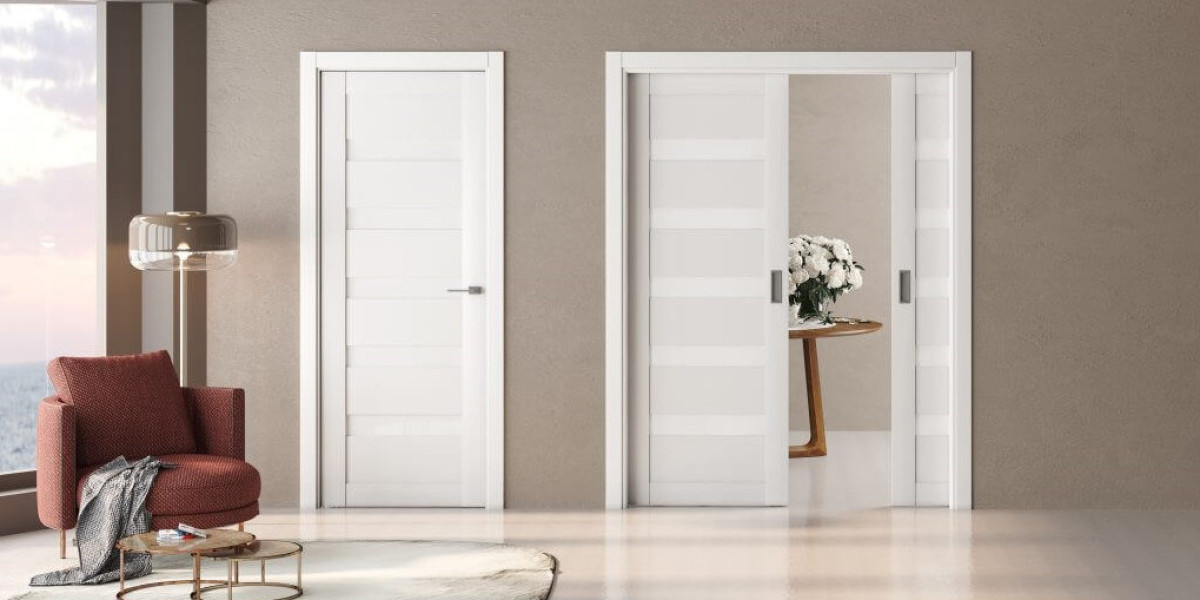Interior doors are more than just functional elements in a homethey play a crucial role in defining the aesthetic, style, and atmosphere of each room. Whether you're building a new house, remodeling, or simply updating a few features, selecting the right interior doors San Francisco can make a huge difference. This guide will help you navigate the types, styles, and materials available, so you can choose the perfect doors for your space.
1. Types of Interior Doors
Before diving into the design, it's essential to consider the type of door you need based on your space and functionality. Here are some common types of interior doors:
- Swing Doors: These are the most traditional types of doors, with hinges on one side allowing the door to swing open and close. They are versatile and come in single or double configurations.
- Sliding Doors: Perfect for saving space, sliding doors move along a track rather than swinging open. They are ideal for closets, bathrooms, or rooms with limited space.
- Pocket Doors: These are a type of sliding door that disappears into the wall when opened. They are great for small rooms or areas where a swing door might not be practical.
- French Doors: These doors have glass panels, allowing natural light to flow between rooms while still providing separation. They add a touch of elegance to dining rooms, offices, or living rooms.
- Barn Doors: A popular modern design feature, barn doors slide on a track above the doorframe and can be a unique statement piece in any home.
2. Materials for Interior Doors
The material of your interior door not only impacts the look and feel but also its durability, soundproofing, and maintenance needs. Here are some common materials used:
- Solid Wood: A classic choice for many homeowners, solid wood doors are durable and offer excellent sound insulation. They come in various wood types like oak, pine, and mahogany, each giving a different tone and grain pattern.
- MDF (Medium-Density Fiberboard): MDF doors are an affordable option that mimics the look of wood but without the grain patterns. They are smooth, easy to paint, and resistant to warping.
- Hollow Core: These are lightweight and cost-effective, but they provide less sound insulation and durability than solid doors. They are best used in areas with low traffic, like closets or bathrooms.
- Glass: Glass doors, whether frosted or clear, create an open and airy feel. They are often used for offices or as dividers between living areas.
- Metal: Metal interior doors, though less common, offer a sleek, industrial look that works well in modern or minimalist homes. They are durable and low-maintenance.
3. Choosing the Right Style
The style of your interior door can significantly impact the overall design of your home. Here are some popular styles to consider:
- Panel Doors: Panel doors are the most traditional style, featuring raised or recessed panels. They come in different configurations, such as two-panel, four-panel, or six-panel designs.
- Flush Doors: Flush doors have a smooth, flat surface with no panels or moldings, giving them a clean, modern look. They are perfect for minimalist or contemporary spaces.
- Louvered Doors: These doors have horizontal slats that allow air to circulate, making them ideal for closets, laundry rooms, or pantries.
- Shaker Doors: Known for their simple, clean lines, Shaker-style doors are timeless and versatile, working well in both modern and traditional settings.
4. Customization Options
Interior doors offer endless opportunities for customization. Here are a few options to personalize your doors:
- Paint or Stain: Painting your doors in bold colors can create a focal point, while staining highlights the natural beauty of wood.
- Hardware: The door handles, hinges, and locks you choose can complement your doors style. Matte black, brass, and chrome finishes are all popular choices.
- Glass Inserts: Adding glass inserts to wooden doors can bring more light into the room and create a more open feel.
- Trims and Moldings: Decorative trims and moldings can enhance the elegance of your doors, giving them a more finished look.
5. Soundproofing and Insulation
If noise reduction is a priority, consider doors that provide better soundproofing. Solid wood doors or those with insulated cores offer better sound insulation compared to hollow-core doors. Additionally, weatherstripping around the edges can further block noise and drafts, making your rooms more private and comfortable.
6. Installation Tips
While professional installation is often recommended, some types of doors, like barn or sliding doors, may be easier to install yourself. Before starting, measure the door frame accurately, ensure the door is level, and use the right hardware to guarantee smooth operation.
Conclusion
Interior doors are more than just barriers between roomsthey are design elements that enhance the overall look and functionality of your home. Whether you're looking for sleek, modern doors or classic, timeless styles, the wide variety of options available ensures theres something to match every taste and budget.
Take your time to consider the type, material, style, and customization options that best suit your space. The right interior doors will not only enhance your homes aesthetics but also improve its comfort and efficiency.








